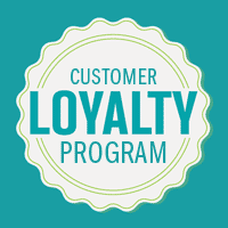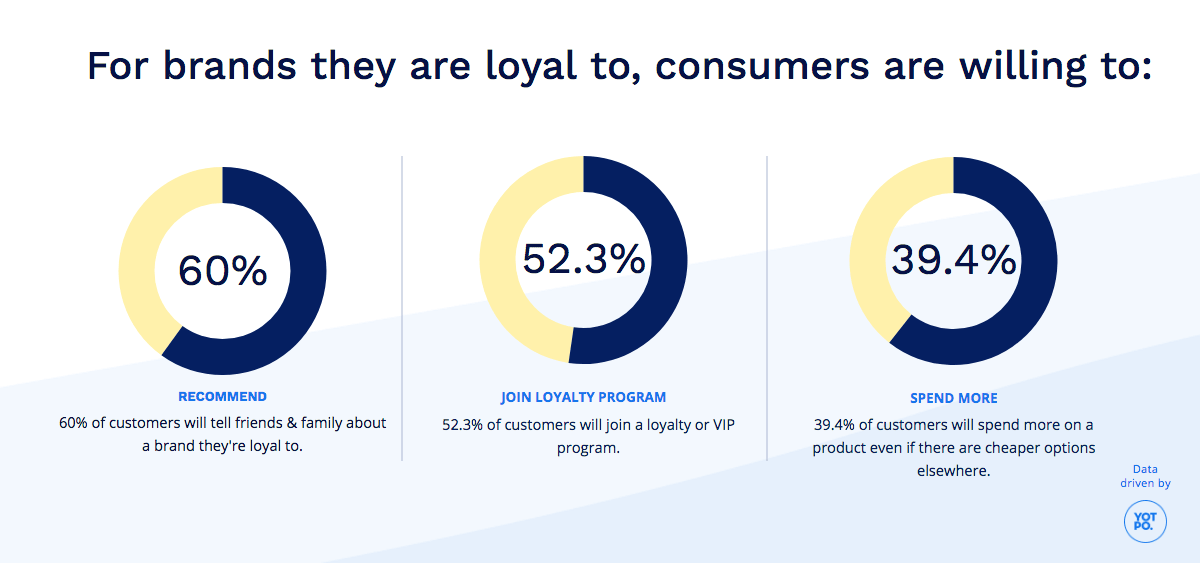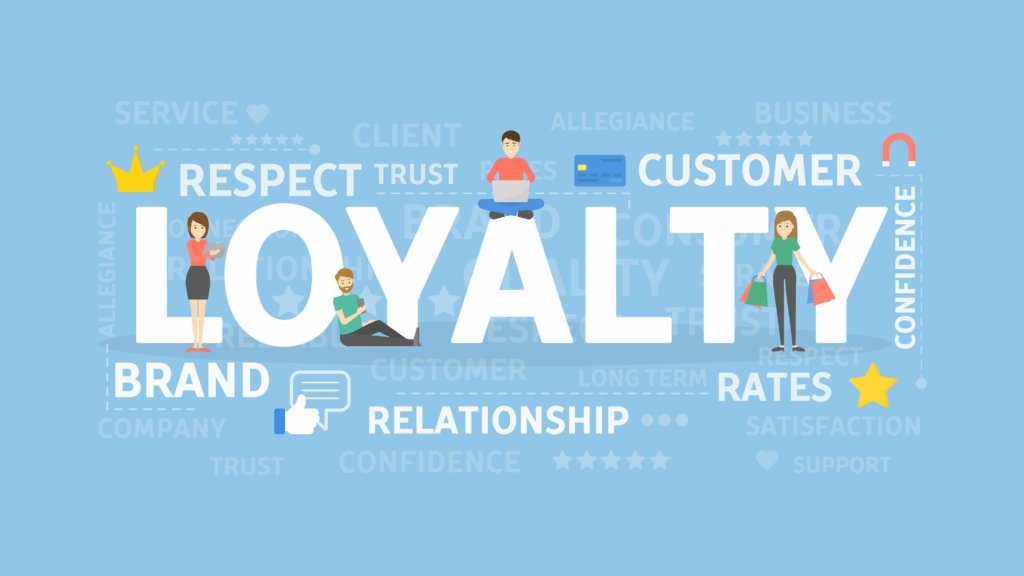All Categories
Featured
Table of Contents
In 29550, Makhi Williamson and Malik Stewart Learned About Prospective Client

What if you could grow your organization without increasing your costs? In fact, what if you could really lower your costs but increase your sales, year after year? Would you do it? If you're an entrepreneur, then you'll likely offer a resounding 'yes', a basic response to an even simpler question.
A rewards program tracks and benefits particular spending habits by the customer, supplying unique benefits to faithful clients who continue to patronize a particular brand. The more that the consumer invests in the store, the more advantages they get. With time, this reward builds loyal clients out of an existing client base.

Even if you already have a benefit program in location, it's a good concept to dig in and totally comprehend what makes client commitment programs work, along with how to carry out one that costs you little money and time. Don't fret, I'll help you with that. I'll break down the primary advantages of a commitment program and the finest methods to develop faithful customers.
Let's dig in. Client commitment is when a customer returns to do company with your brand name over your rivals and is mostly affected by the positive experiences that the client has with your brand name. The more favorable the experience, the more most likely they will return to go shopping with you. Customer commitment is incredibly crucial to services since it will help you grow your company and sales faster than a basic marketing plan that concentrates on recruiting new consumers alone.
A few ways to determine customer commitment consist of:. NPS tools either send out a brand efficiency study through e-mail or ask consumers for feedback while they are visiting a business's site. This details can then be used to much better understand the likelihood of client loyalty. A repurchase ratio measures the ratio of repeat purchasers versus one-time purchasers.
Consumer loyalty index (CLI). The CLI tracks client loyalty gradually and resembles an NPS survey. However, it takes into consideration a few additional elements on top of NPS like upselling and repurchasing. These metrics are then utilized to examine brand name commitment. A client commitment program is a marketing method that rewards consumers who make purchases and engage with the brand on a continued basis.
Customer benefits programs are designed to incentivize future purchases. This motivates them to continue doing service with your brand. Client commitment programs can be set up in lots of various ways. A popular consumer loyalty program rewards customers through a points system, which can then be invested in future purchases. Another type of customer commitment program may reward them with member-exclusive benefits or totally free presents, or it might even reward them by contributing cash to a charity that you and your clients are mutually enthusiastic about.
In 28540, Emmalee Bowen and Gary Browning Learned About Prospective Client
By providing rewards to your consumers for being loyal and helpful, you'll build a rapport with them, deepening their relationship with your brand and hopefully making it less most likely for them to switch to a competitor. You've likely seen consumer commitment programs in your own shopping experience, whether at your favorite coffee shops or your most frequented grocery stores.
But just due to the fact that everybody is doing it does not mean that's a sufficient factor for you to do it too. The much better you comprehend the benefits of a consumer rewards program, the more clarity you will have as you create one for your own shop. You will not be sidetracked by interesting advantages and complex commitment points systems.
Keep in mind: work smarter, not harder. Consumer retention is the primary benefit of a benefits program that acts as a structure to all of the other advantages. As you supply incentives for your existing customer base to continue to buy from your shop, you will provide your shop with a stable flow of cash month after month.
By growing your retention rate, you can stop investing as much time or money on increasing your total number of customers. Why is this crucial? Devoted consumers have a higher conversion rate than brand-new consumers, indicating they are most likely to make a deal when they visit your shop than a new customer.
By increasing your retention rate by only 5 percent, you can increase your profits by 25 percent and as much as by 95 percent. Needless to state, your retention rate matters. Key Takeaway: If you wish to significantly increase your revenues, supply rewards for your existing clients to continue to patronize your store.
And you will not have to spend money on marketing to get them there. Client acquisition (aka bringing in brand-new customers) takes a great deal of effort and cash to convince complete strangers to trust your brand, pertained to your shop, and attempt your items. In the end, any money made by this brand-new consumer is eclipsed by all of the money invested on getting them there.
Key Takeaway: If you wish to reduce costs, focus on consumer retention rather of customer acquisition. When you focus on offering a positive personalized experience for your existing customers, they will naturally inform their loved ones about your brand name. And with each subsequent transaction, devoted consumers will inform much more people per deal.
In 36605, Catherine Morales and Aryanna Reyes Learned About Happy Customers
The very best part? Because these new clients originated from relied on sources, they are more most likely to develop into faithful consumers themselves, investing more on average than new customers brought in by other marketing efforts. The Chase Ultimate Benefits program, for example, provides major perks for individuals who travel a lot.
The 'ultimate rewards' that Chase cardholders get include 2x points per dollar spent on all travel purchases along with main rental vehicle insurance, no foreign deal charges, trip cancellation insurance coverage, and purchase security. For people who travel a lotand have non reusable income to do sothere is an enormous incentive to spend money through the supreme benefits program.
This entire procedure makes redeeming rewards something worth bragging about, which is precisely what lots of cardholders end up doing. And to assist them do it, Chase provides a bonus offer for that too. Key Takeaway: Make it simple for your customers to extol you and they will spread the word about your buy totally free.
As soon as you get the fundamentals down, then using a commitment rewards app can help take care of the technical information. Here are the actions to begin with producing your client commitment program. No client desires to purchase items they don't want or need. The very same goes for your loyalty program.
And the only way to customize a tempting consumer loyalty program is by totally knowing your client base. The finest way to do this? By executing these techniques: Construct consumer contact info any place possible. Ensure your company is constantly constructing a detailed contact list that permits you to gain access to existing clients as frequently and as easily as possible.

Track customer behavior. Know what your consumers desire and when they want it. In doing so, you can anticipate their desires and requires and supply them with a loyalty program that will please them. Categorize client personal traits and preferences. Take a multi-faceted approach, do not limit your commitment program to simply one avenue of success.
Motivate social networks engagement. Frame strategies to engage with your consumers and target audience on social media. They will quickly supply you with really insightful feedback on your products and services, allowing you to much better comprehend what they get out of your brand. When you have actually exercised who your customers are and why they are working with your brand name, it's time to choose which type of commitment benefits program will encourage them to stay loyal to you.
In 44095, Taniyah Graham and Remington Trevino Learned About Mobile App
Nevertheless, the most typical consumer loyalty programs centralize around these primary ideas: The points program. This type of program focuses on rewarding clients for every purchase they make with points in a point system. These points can then either be utilized on future purchases or put towards some kind of reward.
The paid program. This type of program needs consumers to pay a one-time or yearly fee to join your VIP list. Loyalty members who come from this list have the ability to gain access to special rewards or member-exclusive advantages. The charity program. This kind of program is a little bit different than the others.
This is accomplished by motivating them to do business with the brand and, in return, their loyalty will be rewarded with a contribution to a charity. The tier program. This type of program concentrates on increasing levels of brand name loyalty. The more devoted a customer is to a brand name, the higher tier they will reach and the much better the rewards they will receive.
This type of program is simply as it sounds, where one brand name partners with another brand name to supply their collective audiences with special member discount rates or offers that they can redeem while doing business with either brand. The neighborhood program. This type of program incentivizes brand name loyalty by providing its members with access to a like-minded community of individuals.
This type of program is relatively comparable to paid programs, nevertheless, the subscription charge occurs on a regular basis instead of a one-time payment. Next, select which consumer interactions you want to reward. Base these rewards around which interactions benefit your service the many. For example, to assist your service out, you can offer action-based rewards like these: Reward clients more when doing service with your brand throughout a slow period of the year or on a notoriously sluggish day of company.
Reward consumers for engaging with your brand name on social media. Incentivize certain products you are attempting to move rapidly. Incentivize purchases that are over a particular dollar amount. The idea is to make your customer commitment program as simple as possible for your clients to use. If your client commitment program isn't personnel friendly, isn't simple to track, is too expensive to run, or isn't easy for your consumers to utilize or understand, then personnel and clients alike most likely will not benefit from it.
To eliminate these barriers to entry, think about incorporating a consumer commitment software application that will assist you keep on top of all of these elements of your program. Some quality consumer program software include:. CandyBar is a digital punch card program. It works by tracking your consumer's purchases through an app on a computer, phone, or tablet.
In 20601, Hailie Skinner and Kiersten Cook Learned About Special Offers
Commitment members can then inspect their rewards via text and company owner can utilize the program to contact their customers. Yotpo. Yotpo is a cloud-based client loyalty platform specifically for eCommerce organizations. This software is especially proficient at gathering every type of user-generated content, handy for customizing a better customer experience.
Loopy Loyalty is a convenient consumer commitment software for companies that primarily utilize Google Wallet or Apple Pay as their payment platforms. The software application produces a digital loyalty card that sends out push notifications to their consumers' phones when they remain in close proximity to their traditional store. Once you've made the effort to decide which customer commitment methods you are going to execute, it's time to start promoting and registering your first commitment members.
Usage in-store advertisements, incorporate call-to-actions on your site, send promotions through email newsletters, or upload advertising posts on social networks to get your consumers to sign up with. It is very important to comprehend the primary advantages of a consumer rewards program so that you can produce a tailored experience for both you and your client.
Think of it. You understand what type of items your clients like to purchase however do you understand what brings them back, day after day, week after week? What makes them pick your store over the store across the street? What makes them your client and not the consumer of your biggest rival? Surprisingly, the responses to these concerns do not come down to discount prices or quality products.
Table of Contents
Latest Posts
Top Web Design Courses Online - Updated [April 2022] - Udemy Tips and Tricks:
Web Design - Website Design Tutorials, Articles And Free Stuff Tips and Tricks:
Responsive Design Best Practices - Google Search Central Tips and Tricks:
More
Latest Posts
Top Web Design Courses Online - Updated [April 2022] - Udemy Tips and Tricks:
Web Design - Website Design Tutorials, Articles And Free Stuff Tips and Tricks:
Responsive Design Best Practices - Google Search Central Tips and Tricks: